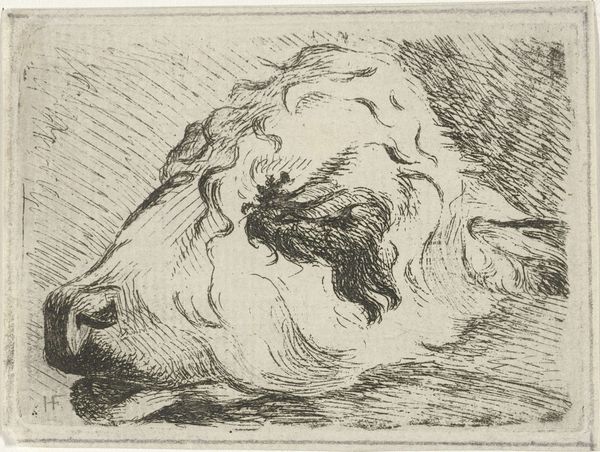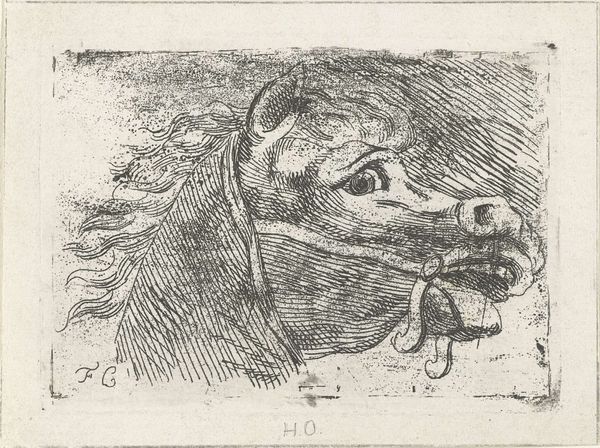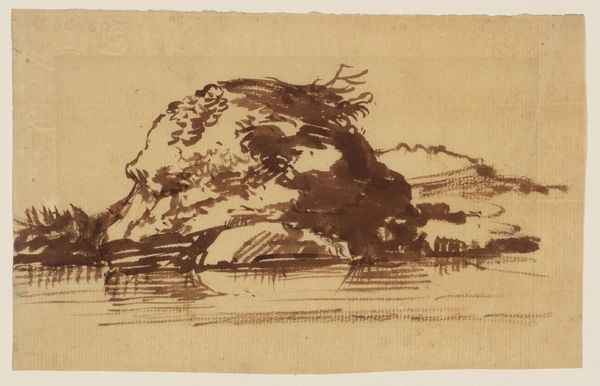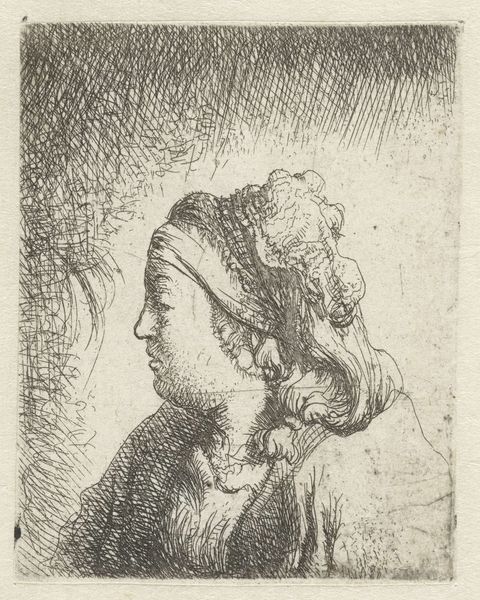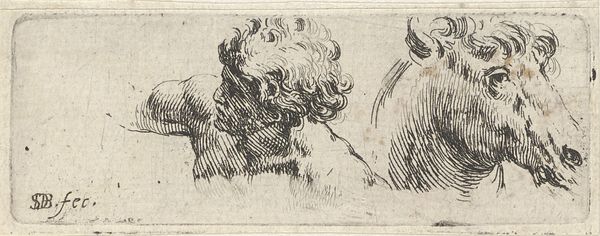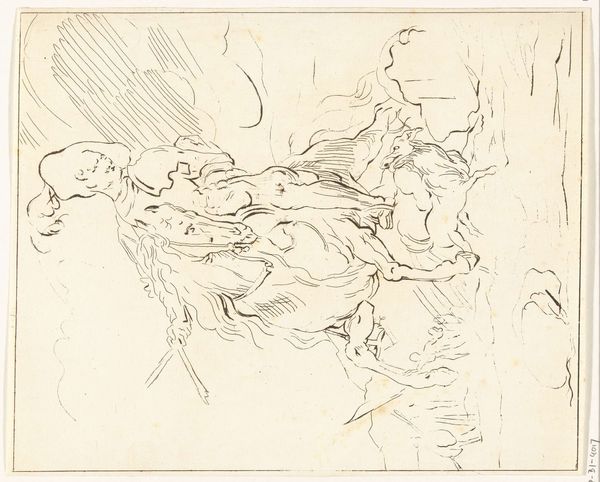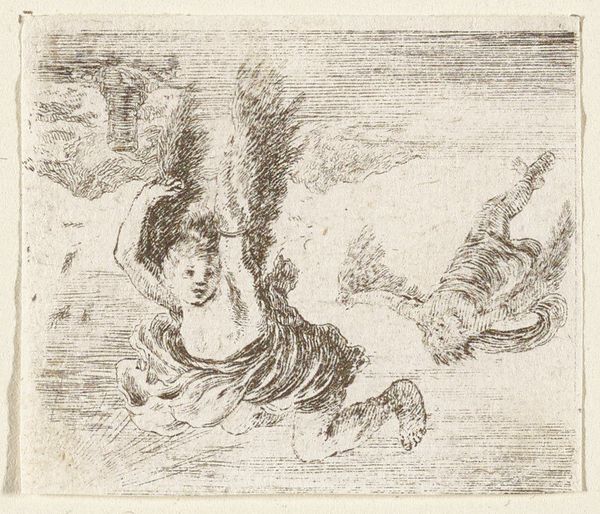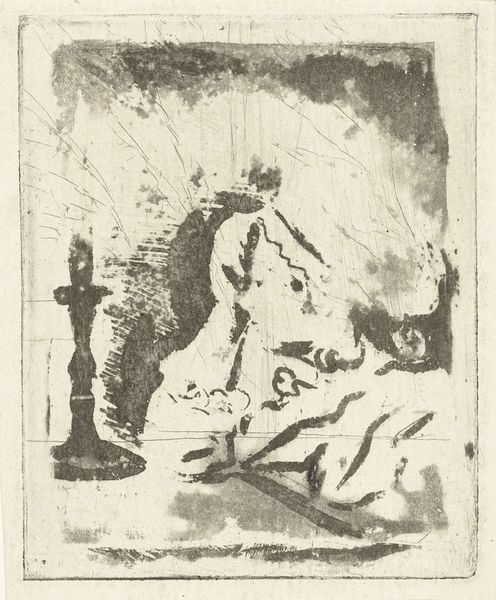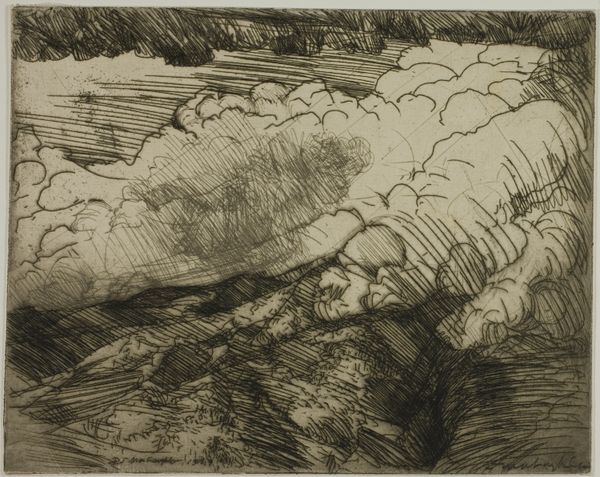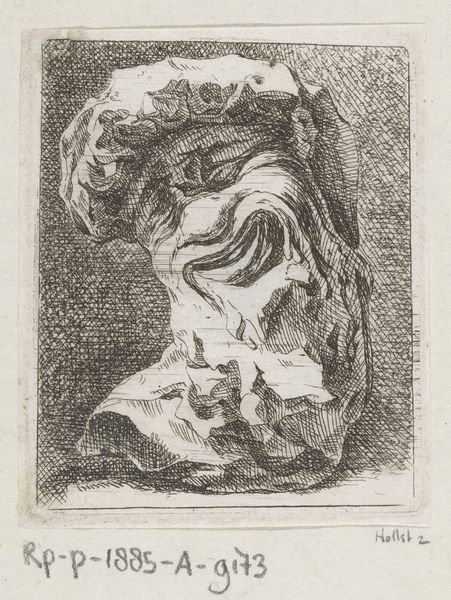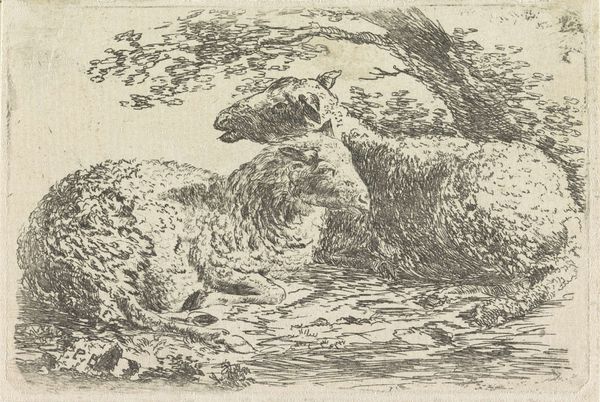
drawing, etching, ink
#
portrait
#
drawing
#
etching
#
etching
#
ink
#
realism
Dimensions: height 65 mm, width 88 mm
Copyright: Rijks Museum: Open Domain
Curator: Good morning, and welcome. We are standing before "Head of a Calf, Resting on a Beam" by Hermanus Fock. The Rijksmuseum dates this etching to sometime between 1781 and 1822. Editor: The cross-hatching gives this piece an almost unsettlingly realistic depiction, especially around the face of the calf. Its textures create quite a poignant still life. Curator: Absolutely. Note the expert employment of line. Fock uses delicate lines to contour the animal’s features, then employs densely layered, harsher lines to sculpt the shadow and form. He balances line weight, creating an object that exists both abstractly and tangibly within the picture plane. Editor: I'm interested in the materiality here. We have to consider the work of the etcher – the precise tools, the labour intensive process of layering the lines to bring depth to this plate. There’s an intensity of craft in the image itself – a palpable tension born of time, labor, and skill. Curator: That tension is indeed evident. Consider how Fock deliberately chooses not to polish areas of the plate perfectly, instead showcasing rough scratches in a manner of creating tone. The unpolished lines offer insight into both Fock's mental process as an artist, and as material signifier itself within the context of labor. Editor: Yes, exactly. By the late eighteenth century, the value and meaning associated with agricultural work had come under scrutiny within certain philosophical and intellectual circles. Etchings such as this potentially acted as a record, or even perhaps as a celebration, of that agrarian labor and toil within rural society. Curator: It makes us question if Fock's conscious decision of showcasing a farm animal at rest also carries symbolic weight – maybe hinting at both the pastoral peace and the unromantic aspects of livestock. A formal choice that creates powerful tensions between pastoral representation and more modern concerns around labor. Editor: Absolutely, and looking closely, you sense the dedication that Hermanus Fock brought to the act of production and image-making within an etching. It gives an insight into eighteenth-century methods of representation. Curator: It certainly offers food for thought. Editor: A powerful piece of graphic history!
Comments
No comments
Be the first to comment and join the conversation on the ultimate creative platform.
